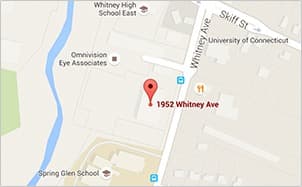Gastroesophageal reflux disease or GERD occurs when stomach acid, food or contents flow back into the esophagus, or tube connecting the mouth to the stomach. It is present in 10-20% of the population in the western world. Typical symptoms of acid reflux are regurgitation and heartburn, both of which are very specific for GERD. Atypical symptoms include upper abdominal fullness, pain, belching, and bloating. Symptoms beyond the esophagus include chronic cough, hoarseness, sore throat, wheezing and dental erosion. Symptoms are generally worse after meal intake and when lying down flat. GERD is caused by weakness or abnormal relaxation of the lower esophageal sphincter muscle, which then allows back-flow of stomach acid into the esophagus.
 Risk factors for GERD include obesity, pregnancy, smoking, alcohol consumption, certain medications (e.g. aspirin), and the presence of a hiatal hernia, which is when a part of the stomach rises above the level of the diaphragm and bulges into the chest. Symptoms can also be triggered by certain foods; such as, chocolate, coffee, fried or fatty foods, peppermint, tomato sauce, citrus fruits or juices, and carbonated drinks.
Risk factors for GERD include obesity, pregnancy, smoking, alcohol consumption, certain medications (e.g. aspirin), and the presence of a hiatal hernia, which is when a part of the stomach rises above the level of the diaphragm and bulges into the chest. Symptoms can also be triggered by certain foods; such as, chocolate, coffee, fried or fatty foods, peppermint, tomato sauce, citrus fruits or juices, and carbonated drinks.
Diagnosis of GERD is usually made based on typical clinical symptoms and on response to empirical treatment with an acid blocker. Additional testing may be needed for patients who do not respond to acid suppression therapy, to evaluate for complications from chronic GERD, and to confirm diagnosis when it is questionable. Esophageal pH monitoring is a test that uses a capsule placed in the distal esophagus to measure pH. Information is collected for 24-48 hours and then transmitted to a receiver. Symptoms of GERD are correlated with reflux episodes and acid exposure. Upper endoscopy is a study that visually evaluates the lining of the esophagus and allows for biopsy.
Treatment for GERD starts with lifestyle changes. This includes weight loss, keeping the head of the bed elevated 4-6 inches, avoiding eating 3 hours before sleep, and avoidance of trigger foods and beverages.
Medical therapy involves acid suppression in the form of antacids, histamine-2 receptor antagonists (H2RAs), and proton-pump inhibitors (PPIs). Rate of healing of inflamed esophagus and heartburn symptom relief is greater with PPIs, compared to H2RAs. A study conducted in 2001 showed that after 1 year, more than 50% of the participating patients were able to stop PPI use, or step down to H2RA therapy, in an attempt to use the least expensive, yet effective medication. Some patients need lifelong medical therapy. Finally, anti-reflux surgery is an option in patients who do not respond to, or are intolerant to medical therapy.
Currently, research is underway at Chase Medical Research to evaluate the role of bile acid reflux in GERD symptoms. It is thought that bile acid binding agents, that prevent reflux of bile acids into the esophagus, may control symptoms in patients with inadequate relief with PPIs.
References:
- What is Gastroesophageal Reflux Disease (GERD)? American Gastroenterological Association, July 2017
- Diagnosis and Treatment of Gastroesophageal Reflux Disease. World Journal of Gastrointestinal Pharmacology and Therapeutics. Raul Badillo and Dawn Francis. August 6, 2014; 5(3): 105-112
Share This Post
Recent Posts
- The Relationship Between Obesity and Obstructive Sleep Apnea January 30 2019
- Cardiovascular Outcome Clinical Trials January 30 2019
- Diabetic Peripheral Neuropathic Pain January 30 2019
- Are All Types of Cholesterol Bad? January 30 2019
- Blood Pressure: The Highs, the Lows, and Everything in Between January 30 2019
Categories
- Clinical Trials
- Cardiovascular Disease
- Diabetes
- Obesity
- Kidney Disease
- Hypertension
- Pain Management
- Vaccine
- Cholesterol
- Chronic Obstructive Pulmonary Disease
- Diabetic Peripheral Neuropathy
- Migraine
- Osteoarthritis
- Biologics
- COVID-19
- Gastroesophageal Reflux Disease
- Irritable Bowel Syndrome with Constipation
- Lyme Disease
- Nonalcoholic Steatohepatitis
- Respiratory Syncytial Virus


